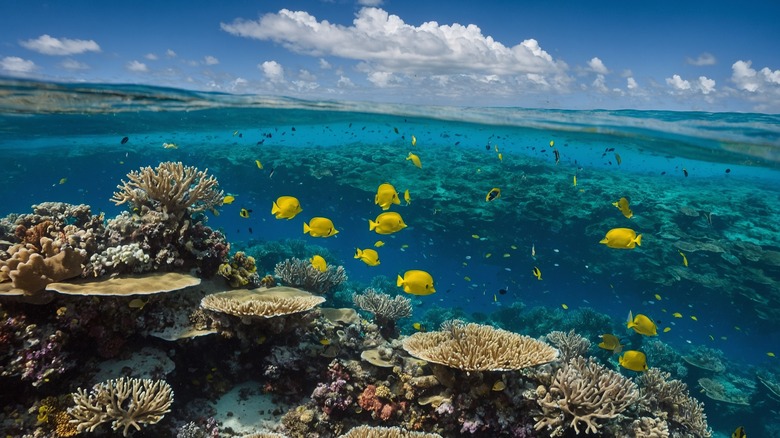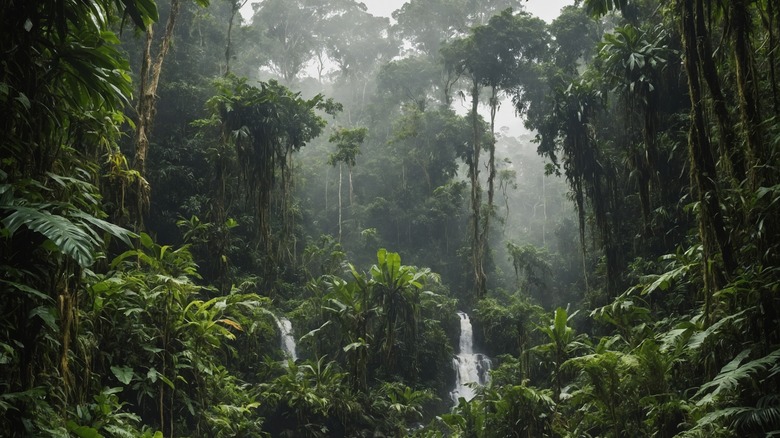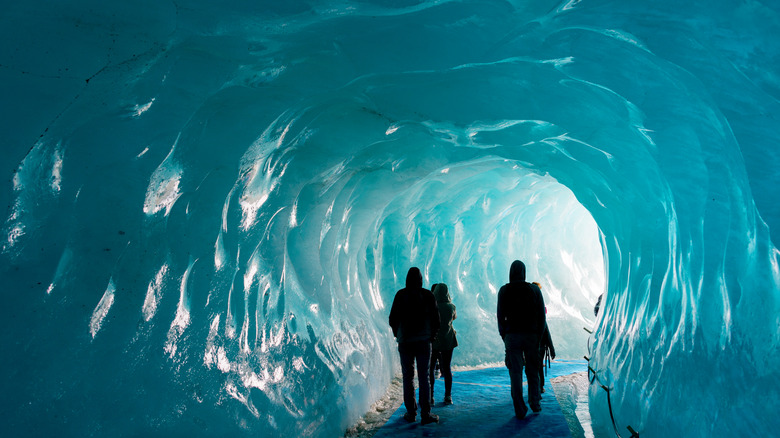The 'Last-Chance Tourism' Trend Has Travelers Rushing To Must-See Destinations Around The World
See it before it's gone. That's been a popular hook for sales people, carnies, and barkers as long as there's been a desire to woo others to see goods, performances, and attractions. Today, it's become somewhat of a creed for a new type of traveler. "Last-chance tourism" involves heading to iconic areas that are being threatened by climate change to see them before they're irrecoverably damaged — or worse, completely gone. These destinations usually involve natural features but also include some of the world's most seminal cities.
Last-chance tourism is a unique phenomenon. Very few of these destinations are easy to reach. But, just as the thrill of dangerous outdoor sports appeals to some, journeying to extreme destinations is popular among a certain segment of the population. That segment has been growing as more of these remote areas become labeled as threatened or endangered, turning them into last-chance travel spots. However, the fragile nature of these destinations has generated some controversy over this type of globetrotting. For better or worse, the last-chance tourism trend has travelers rushing to must-see locales around the world.
Popular last-chance destinations
Many of the areas that are now considered last-chance tourism destinations are spots that have long been considered unique ecosystems and/or natural features. The Great Barrier Reef, located off the coast of Australia, is the world's largest coral reef and has been designated as a UNESCO World Heritage Site. While it may be difficult to imagine the destruction of something as massive as this 133,000-square-mile system, it and the thousands of marine species inhabiting it face a variety of threats. The greatest of these, according to the Great Barrier Reef Foundation, is climate change.
This is the same story for another iconic ecosystem that is now considered a last-chance tourist spot. Covering nearly 1.5 billion acres, the sprawling Amazon rainforest comprises over half of Earth's remaining jungles. However, the World Wildlife Federation says it is rapidly shrinking due to deforestation and climate change. Some experts predict the ecosystem will cease to exist as we know it as early as 2050. While measures have been taken to curb this downward spiral, the rainforest is still fragile, which has made the Amazon region a popular last-chance destination.
Similarly, areas such as the Maldives, Galapagos Islands, both the Arctic and Antarctica, and Mer de Glace glacier in the French Alps have become more popular among tourists as they have gone into decline and been labeled as last-chance destinations. Not all, however, are a world away. The Florida Everglades make several last-chance lists, as do cities such as Venice, Italy, which is sinking below rising sea waters due to climate change.
Why last-chance tourism is controversial
It's certainly understandable why people are rushing to see these unique places before they are irreversibly damaged or destroyed. But there are also unintended consequences that accompany this surge in interest. It is these repercussions that have led to the controversy over last-chance tourism. For starters, a report by the World Tourism Council states travel and tourism result in 8 to 11% of global greenhouse gas emissions. While the WTC has also provided a plan to reduce those impacts, the fact is an increase in travel can lead to an increase in the conditions that are currently threatening these last-chance tourism destinations.
Additionally, destinations on last-chance tourism lists are already considered threatened or endangered because of degradation due to climate change and other factors. Crowds heading to see them can accelerate the destruction not only through additional greenhouse emissions, but also through recreational use. For example, Everglades National Park and Glacier National Park are on almost everyone's national park bucket list — not simply because they're considered last-chance destinations, but because they offer a variety of outdoor recreational opportunities. While these activities can be done responsibly, not everyone tries to ensure minimal environmental impact. Furthermore, the sheer number of people visiting these areas can take a toll on the ecosystem.
Still, proponents argue that last-chance tourism has a positive impact by bringing awareness to the plight of these areas and drawing attention to the need for more eco-friendly travel. The idea is tourists will begin to be more conscientious about the footprint they leave when visiting natural places. Time will tell if this is true.


